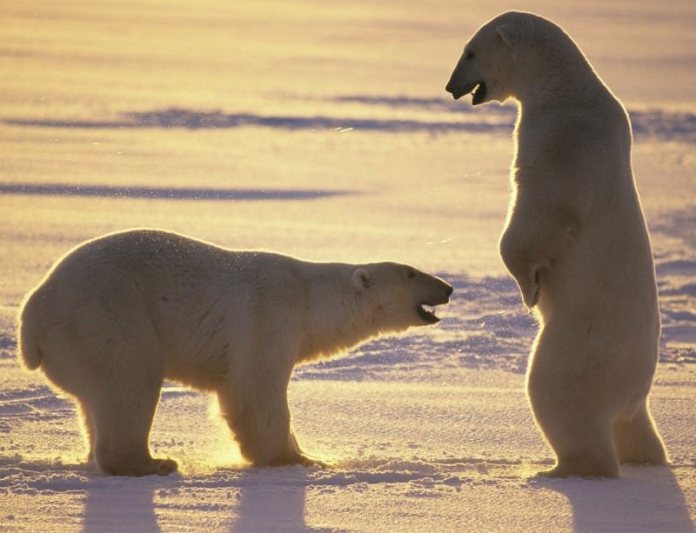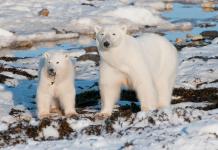The polar bear penis possesses baculum—a penis bone which is found in nearly all placental mammals including primates. However baculum doesn’t occur in human penis. The function of the penis bone is to facilitate the bear in copulation. It isn’t attached to the rest of the bear’s skeleton.
Polar Bear Penis
- The polar bear penis continues to grow in the first 10 years of the bear’s lifespan. Once the bear attains 10 year age, the penis stops growing in length, it then gains weight for another 4 to 5 years.
- Compared to grizzly bears, the polar bear penis bone isn’t only relatively curved, it’s finer too.
The penis is retracted into the body wall until the vascular portion gets engorged with blood, which increases the diameter, length, and rigidity of the polar bear penis for copulation…(Andrew Derocher, a leading polar bear researcher).
- The hairs of the polar bear penis are yellowish and they are pretty long too. Sometimes researchers determine the sex of the bear by looking at its penis hairs.

Polar Bear Testes
- The testes of adult males aren’t really visible. The hairs at the hind legs hide the male’s testes.
- Studies indicate that the length of testes varies with the season. During peak mating season in March and June the polar bear testes attains the maximum length and weight.
- The weight of the polar bear testes is about 3.5 ounces (100 grams). According to studies, the length of the testes also depends on the male’s competition for females. Those mammals which copulate numerous times and compete higher for females are more likely to possess larger testes.
- Larger mammals do not necessarily mean larger testes. In fact it’s the other way round. Larger mammals don’t often copulate not as much as smaller mammals do, so they possess smaller tests as compared to the smaller mammals. The polar bear testes aren’t really extraordinary.
Genitals in Female Polar Bears
- Like male polar bear’s testes, the female’s testes aren’t really extraordinary either. The labia in its genitals do enlarge over the period of seasonal variation.
- During the peak breeding months, the labial swells. However the mating females are known to possess the most swollen labial tissues.
- Like male’s, the female’s hairs are also yellow in color (at its genitalia) probably due to urinating.
How Does Pollution Affect Polar Bears?
- While climate change hits the polar bear population, the industrial wastes and chemical pollutants have lately been affecting the polar bear reproduction in a rather unique way.
- Many scientists agree that the chemical pollutants are rendering the polar bear penis bone quite redundant in that the overall climate reduces the density of the bear’s penis bone.
- Christian Sonne at Aarhus University, Denmark demonstrated that polar bears which contain the highest levels of chemicals in their bodies appear to show smaller testes. Christian claims that these pollutants likely prevent polar bears from mating. He further suggests that “If it breaks, you probably won’t have a polar bear which can copulate.”



